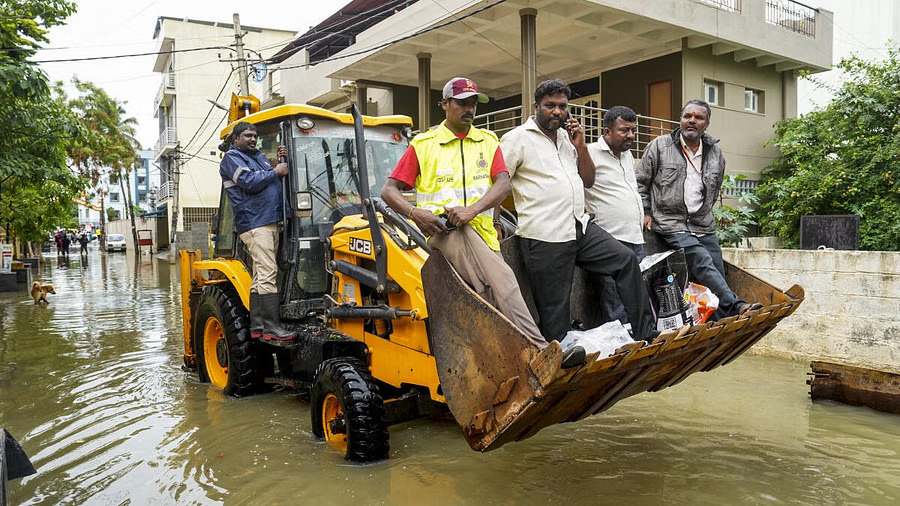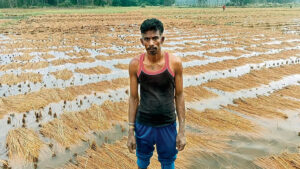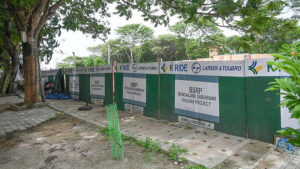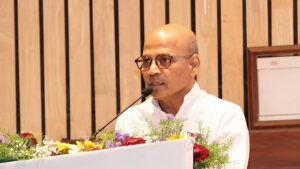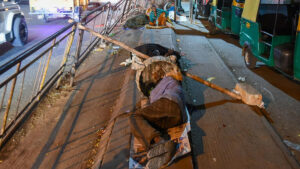Bengaluru, India’s tech capital, has been brought to its knees by relentless pre-monsoon rains that have battered the city since May 18, 2025, causing widespread flooding, massive traffic disruptions, and a rising death toll. The India Meteorological Department (IMD) has issued an orange alert for Bengaluru, forecasting heavy rainfall of 11 to 20 cm, while a red alert has been sounded for seven coastal and interior districts of Karnataka, predicting extremely heavy rainfall exceeding 20 cm. The city recorded an unprecedented 105.5 mm of rainfall in the 24 hours ending at 8:30 am on May 19, marking the heaviest deluge of the year and the second-highest May rainfall in over a century. With waterlogged roads, inundated homes, and a death toll reaching five, Bengaluru’s infrastructure struggles have been laid bare, sparking public outrage and political debates over civic preparedness.
A City Submerged: The Impact of Torrential Rains
The heavy rainfall, triggered by a cyclonic circulation over the Bay of Bengal and a north-south trough from Maharashtra to Kerala, began pounding Bengaluru on the night of May 18, 2025. By Monday morning, the city was grappling with severe waterlogging in low-lying areas such as Sai Layout in Horamavu, HSR Layout, Koramangala, BTM Layout, and Marathahalli. Residents reported knee-deep water flooding streets, with some areas like Sai Layout seeing water levels rise to 4–5 feet, necessitating the deployment of State Disaster Response Force (SDRF) boats to rescue stranded inhabitants. Over 500 homes have been flooded, with significant damage to household belongings, particularly in low-lying zones.
The rainfall has also wreaked havoc on Bengaluru’s already strained infrastructure. Major roads, including Silk Board Junction, Hebbal Junction, Outer Ring Road, and Residency Road, have turned into virtual rivers, causing traffic jams stretching up to 10 kilometers. The Bengaluru Traffic Police issued multiple advisories, temporarily closing key routes like Hosur Road between Silk Board Junction and Rupena Agrahara due to flooding, though the road was later reopened as waters receded. Underpasses like Tindlu and flyovers near Hebbal remain submerged, with new potholes emerging across the city, posing significant risks to motorists. Public transport, including buses, has been severely disrupted, with commuters struggling to find cabs or autos amidst skyrocketing fares.
The IMD reported that Rajarajeshwari Nagar recorded the highest rainfall in Karnataka at 132 mm, while other areas like Koramangala, Basavanagudi, and HAL Airport saw over 90 mm. Bengaluru’s lakes, particularly in Yelahanka, where 20 of 29 lakes reached full capacity, are on the brink of overflowing, exacerbating flooding in surrounding areas. The Central Silk Board metro station, still under construction, was inundated, highlighting the city’s inadequate drainage systems, which were designed to handle only 40–70 mm of rain.
Tragic Losses: A Rising Death Toll
The heavy rains have claimed five lives across Karnataka, with three fatalities reported in Bengaluru alone. A 63-year-old man and a 12-year-old boy were electrocuted in south Bengaluru while attempting to pump water out of their flooded portico, underscoring the dangers of waterlogging combined with electrical hazards. In Whitefield Industrial Area, a 32-year-old woman lost her life when a wall collapsed near a semiconductor firm, a stark reminder of the structural risks posed by heavy rainfall. Two additional deaths due to lightning strikes were reported in Raichur and Karwar, contributing to the state’s rain-related toll.
Civic Response and Political Backlash
The Bruhat Bengaluru Mahanagara Palike (BBMP), recently replaced by the Greater Bengaluru Authority (GBA), has been working to address the crisis, with officials clearing debris and unclogging drains. BBMP Chief Commissioner Maheshwar Rao described the rainfall as the second-highest in a decade, admitting that the city’s outdated drainage systems were overwhelmed. A temporary bund near Bellandur was cleared using earthmovers to alleviate flooding, but areas like Sai Layout remain heavily inundated due to choked channels like the Bellandur Lake diversion and KC Valley.
Karnataka Deputy Chief Minister DK Shivakumar, also the Bengaluru Development Minister, has been vocal in addressing the crisis, stating that 70% of the 210 identified flood-prone areas in Bengaluru have been rectified since he assumed office. He emphasized ongoing efforts by officials to mitigate flooding and urged residents not to panic, asserting that the issues stem from years of neglect across administrations. However, his assurances have met with skepticism, with former Infosys CFO Mohandas Pai and other critics lambasting both the Congress-led state government and previous BJP administrations for repeated failures in flood management. Pai highlighted the recurring flooding in tech hubs like Manyata Tech Park, where water levels reached two feet, as evidence of systemic neglect.
Karnataka Chief Minister Siddaramaiah, who recorded 104 mm of rainfall on May 18, announced plans to visit rain-affected areas on May 19 to assess relief measures. The government has identified 132 trouble spots prone to flooding, with traffic police issuing advisories to help commuters navigate hazardous routes. Meanwhile, BJP MP PC Mohan urged companies, including Infosys, to implement work-from-home policies for two days to ease commuting challenges, reflecting the severity of the situation in tech-heavy areas like Marathahalli and Bellandur.
Public Frustration and Social Media Outcry
Social media platforms have been flooded with videos and posts showcasing the extent of Bengaluru’s plight. Visuals from HSR Layout, Shanti Nagar, and the Silk Board Metro Station depict waterlogged roads, stranded vehicles, and even a flooded Kanteerava Stadium, prompting netizens to decry the city’s infrastructure as a “branded hell.” Residents have expressed frustration over the BBMP’s slow response, with many calling for long-term solutions to address the city’s chronic flooding issues. Hobby weather watchers like Namma Karnataka Weather, with 18,000 followers on X, described the May 18 deluge as the heaviest of the year, warning of continued traffic snarls and potential cloudbursts delivering 15–20 cm of rain in short bursts.
Weather Forecast: No Respite in Sight
The IMD has forecast moderate to heavy rain with thundershowers and gusty winds of 50–60 km/h in Bengaluru for the next 48 hours, with the orange alert extending to 11 districts, including Dakshina Kannada, Udupi, and Shivamogga. A yellow alert, indicating 6–11 cm of rain, remains in place for Bengaluru until May 22, with isolated heavy to very heavy rainfall expected across Karnataka until May 25. Coastal districts like Dakshina Kannada and Udupi are under a red alert until May 22, with authorities advising fishermen not to venture into the sea until May 23 due to adverse weather conditions. The convergence of two low-pressure systems has intensified the rainfall, making this one of the most severe pre-monsoon events in recent memory.
Broader Implications: A Wake-Up Call for Bengaluru
The ongoing crisis has exposed Bengaluru’s vulnerability to extreme weather events, raising questions about urban planning and infrastructure resilience. The city’s rapid growth as India’s IT hub has outpaced its civic infrastructure, with outdated drainage systems and unchecked construction in low-lying areas exacerbating flooding. The BBMP has identified 210 flood-prone areas, but the recurring inundation of key tech corridors like Manyata Tech Park and Silk Board underscores the need for systemic upgrades. Residents and analysts alike are calling for better coordination between civic bodies, investment in modern drainage systems, and stricter regulations on construction near lakes and wetlands.
As Bengaluru braces for more rain, the immediate focus is on rescue and relief operations, with the SDRF and BBMP working round the clock to assist affected residents. The government’s promise of swift action offers some hope, but the city’s long-term resilience will depend on addressing the root causes of its flooding woes. For now, Bengaluru’s residents remain trapped in a cycle of waterlogging, traffic chaos, and uncertainty, hoping for clearer skies and a more prepared city in the days ahead.
Sponsored
FACTS Transcripts
Apply for a University document anywhere
https://www.factstranscript.com
Quick Transcripts for popular Universities, check your University name now and get started. We help you to get your transcript application online which is accepted for use of IRCC.
No DD, NO Paperwork. 100% Authentic, Reliable.
FACTS Transcripts Charges · Reviews · Assam Universities · Home · Know your University


